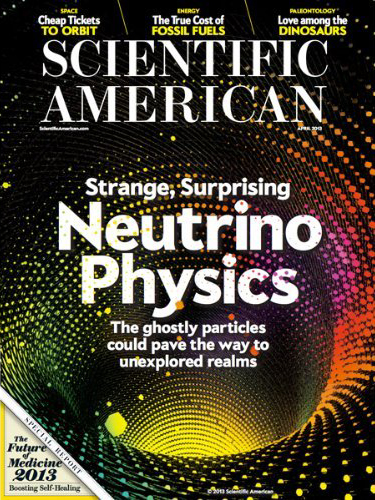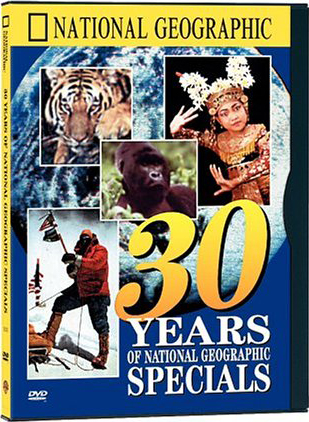
Scientific American: Breaking the Brain Barrier
Science journalist Jeneen Interlandi writes about how a new understanding of the blood-brain barrier as a living, mutable organ could revolutionize the treatment of diseases.
95¢
95¢

Scientific American: Seeds of Dementia
Larry C. Walker, a professor at Yerkes National Primate Research Center and Emory University, and Mathias Jucker, a professor at the University of Tubingen in Germany, uncover how a chain reaction of toxic proteins may help explain Alzheimer's, Parkinson's and other killers.
95¢
95¢

Scientific American: The Future of Medicine
Christine Gorman, Katherine Harmon, and Ferris Jabr report on how new techniques for inducing damaged organs to repair themselves could revolutionize the treatment of heart and neurodegenerative disorders and all kinds of injuries.
95¢
95¢

Scientific American: Why Exercise Works Magic
Shari S. Bassuk, an epidemiologist at Brigham and Women¿s Hospital, Timothy S. Church, a professor at the Pennington Biomedical Research Center at Louisiana State University, and JoAnn E. Mason, chief of the division of preventive medicine at Brigham and Women's Hospital, explain why being active is good for many reasons beyond the old familiar ones.
95¢
95¢

30 Years of National Geographic Specials (1995)
Mystery, danger, splendor, adventure. Since 1964, National Geographic has been broadcasting television specials that created and, many would argue, still maintain the standard for all nature programming since. Vigilantly focusing on what came before human beings, this special is a grand slam of 30 years (1964-1994) of painstaking exploration and documentation. Its narrative sounds almost biblical: "In the beginning..." there was molten lava. The footage is, as you would expect, dazzling but it is the agile editing and well-crafted storytelling here that makes this video into a poignant success.
Moving from the creation of earth to its inhabitants, the narrative segues to the single law of survival. In the Living Sands of Namib (1978), a spider escapes a predator by cartwheeling down a dune. There are clips of Costa Rican lizards sprinting on water, a woodpecker outsmarting a corn snake, and an Indian tiger begrudgingly retrieving his deer-carcass supper from a thieving crocodile. Procreation is, undoubtedly, the more lighthearted side of survival. Three black beetles are in pursuit of a female running in the sand with a musical score so perfectly selected, it is as if the they are engaged in a well-choreographed dance. The synchronized swimming of mating squids in Jewels of the Caribbean (1994) is more graceful than Twyla Thwarp.
After an introduction to the habitat and behavior of so many creatures, the video turns the spotlight on the tool user, fire tamer, language maker: humankind. Americans on Everest (1964), Dr. Leakey and the Dawn of Man (1966), The World of Jacques Yves Cousteau (1966), In the Shadow of Vesuvius (1987), Australia's Twilight of the Dreamtime (1988), and Jane Goodall: My Life with the Chimpanzees (1990) are classic examples of National Geographic at its best. There are also fascinating clips from early Geographic projects, including the 1917 Katmai expedition.
Well beyond serving as a self-congratulatory slap on the back for work well done, this special has an important message: the animals and natural phenoms we fear the most are those we know the least about. Contrary to popular belief, humans are the largest single threat to all life on earth. By bringing fragile ecosystems into our living rooms, National Geographic hopes to instill conservation ethics in each viewer. --Cristina Del Sesto
$10.00
Moving from the creation of earth to its inhabitants, the narrative segues to the single law of survival. In the Living Sands of Namib (1978), a spider escapes a predator by cartwheeling down a dune. There are clips of Costa Rican lizards sprinting on water, a woodpecker outsmarting a corn snake, and an Indian tiger begrudgingly retrieving his deer-carcass supper from a thieving crocodile. Procreation is, undoubtedly, the more lighthearted side of survival. Three black beetles are in pursuit of a female running in the sand with a musical score so perfectly selected, it is as if the they are engaged in a well-choreographed dance. The synchronized swimming of mating squids in Jewels of the Caribbean (1994) is more graceful than Twyla Thwarp.
After an introduction to the habitat and behavior of so many creatures, the video turns the spotlight on the tool user, fire tamer, language maker: humankind. Americans on Everest (1964), Dr. Leakey and the Dawn of Man (1966), The World of Jacques Yves Cousteau (1966), In the Shadow of Vesuvius (1987), Australia's Twilight of the Dreamtime (1988), and Jane Goodall: My Life with the Chimpanzees (1990) are classic examples of National Geographic at its best. There are also fascinating clips from early Geographic projects, including the 1917 Katmai expedition.
Well beyond serving as a self-congratulatory slap on the back for work well done, this special has an important message: the animals and natural phenoms we fear the most are those we know the least about. Contrary to popular belief, humans are the largest single threat to all life on earth. By bringing fragile ecosystems into our living rooms, National Geographic hopes to instill conservation ethics in each viewer. --Cristina Del Sesto
$10.00
